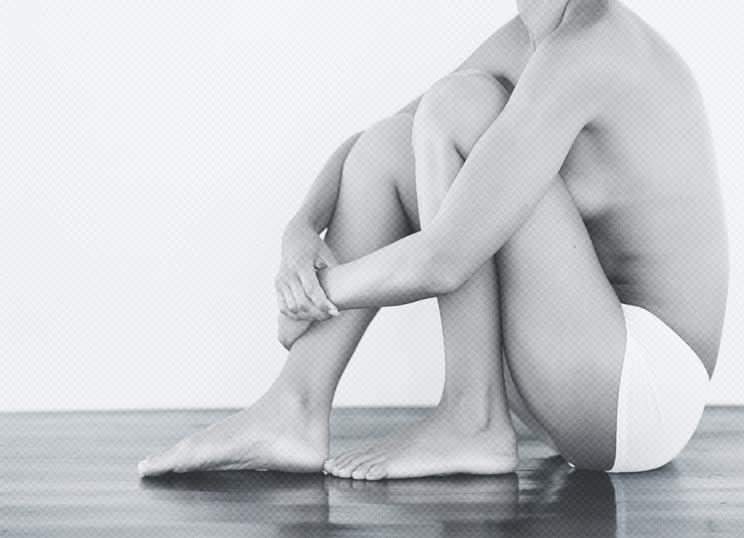Do Europeans Really Feel Differently From Americans About Their Bodies?

In Melania Trump‘s interview with CNN’s Anderson Cooper on Monday, Oct. 17, she not only defended her husband, Republican presidential nominee and former reality television personality Donald Trump, for his comments describing sexual assault on a recently leaked 2005 tape — excusing his behavior as “boy talk” — but she also shared some interesting observations about American perceptions of body image and nudity.
Melania spoke with Cooper about the nude photos of her that the New York Post had run, taken during her time as a model, as an example of what she and her husband believe to be media bias against him and his campaign.
While discussing these photos, Melania said, “I’m very proud I did those pictures. I’m not ashamed of my body. I feel very comfortable with myself and with my body, and they were taken for a European French magazine. In Europe, we are proud of the bodies, no matter what size you are. And it was done as art and a celebration of female body.”
In America, then, she implied, there is less confidence around body image and less comfort around nudity than in her home continent of Europe.
And she might not be wrong.

A society’s beauty ideals and expectations, in terms of appearance, are culturally dependent, according to Rachel Rodgers, an associate professor of psychology at Northeastern University in Boston, whose research focuses on sociocultural influences on body image. “In this way, appearance ideals may vary from place to place,” she tells Yahoo Beauty.
“Sociocultural theories also highlight how appearance ideals are internalized and endorsed by individuals, and how perceiving a discrepancy between one’s appearance and the ideal can lead to concerns and poor body image,” she says. “In addition, the social pressure towards looking like the ideal may vary across countries. In sum, the appearance held as ideal, as well as the pressure to attain it, can vary across cultures and countries even within the Western world, leading to overall differences in body image.”
Rodgers adds: “Research has suggested that people in the U.S. are more dissatisfied with their appearance than Europeans or Australians.”
Bryan Karazsia, an associate professor of psychology at the College of Wooster in Ohio and an expert on body image issues, tells Yahoo Beauty that he recently completed a review of body dissatisfaction literature over the past 30 years, looking for changes across time and for where differences might lie in different geographic regions of the world. His findings might suggest a slightly different story.
Firstly, he explains, he has found that in the past 30 years, “Women are becoming gradually less dissatisfied with their bodies.”
But even more interesting? After reviewing research that included over 100,000 women, over three decades, he found that there were no differences in body dissatisfaction in different geographic regions.
“There is no empirical literature that I’m aware of, including my recent study, that represents that European women have a different level of body dissatisfaction than women in the U.S.,” Karazsia says.
However, Denise Martz, a professor and the chair of the department of psychology at Appalachian State University in North Carolina and an expert in the field of “fat talk,” tells Yahoo Beauty that there are racial differences in the perceptions of body image and body acceptance.
“Caucasian girls/women in the U.S. tend to have the worst body image, compared to other races,” Martz explains. “And we do tend to see cross-cultural differences in comfort and confidence in body image. We tend to pick Caucasian images — media doesn’t ‘happen’ to us, we pick it — in the U.S. that are lean and youthful, then Photoshopped to a point that they are unrealistic, and we herald these images in our media. Thus, it is no wonder that these objectified and sexualized images result in girls and women who feel badly about their bodies.”
She adds, however, that while Melania “may be correct that many European women feel comfortable in their skin at all sizes,” it’s important to note that “as a former model, I’m not sure that she is the ideal role model to encourage Caucasian girls/women to feel better about their bodies, as her appearance is much closer to the U.S. ideal than the typical woman. Further, her appearance was her profession. Thus, she represents a woman with a narrowly defined sense of self and image. There are so many other aspects of womanhood, such as intelligence, caring, creativity, problem-solving, care taking, relationships, etc. The more that girls and women excel in those other aspects of personhood, the less relevant their appearance becomes in their own self-image.”
And Rodgers echoes the significance of media influence on the development of body image standards, and the subsequent feelings of dissatisfaction: “One of the most pervasive vehicles of beauty ideals and appearance pressure is the media,” she says. “Cultural differences in media content and media presence could therefore also be associated with differences in body image. It is difficult to compare media context across cultures with the current globalization. However, it has been shown that the introduction of mostly American media into places such as the Fiji islands was associated with increases in body image concerns.”
And when it comes to attitudes about nudity, including how people might respond to nude photographs, Karazsia explains that one of the leading theories in body image literature is what’s known as objectification theory.
“Historically, women have been sexually objectified,” he notes. “When someone says, ‘I’d like to tap that’ — that’s objectification. That reduces a woman from a dynamic, complicated human to a mere object.”
He adds, “And it goes a step further — if someone is objectified so many times that it becomes the norm, they will begin to self-objectify, where they start to view their own self-worth to the extent to which they fulfill the quality of that object. If a woman objectifies herself so many times, she’ll start to see herself like that. She’ll say, ‘Look at that ass I have!’ — she’ll see herself just as a sex object, instead of a compilation of human parts.”
Furthermore, Karazsia notes that societal attitudes about nudity, including reactions to nude photos, are tied up in this sexual objectification of certain body parts. He explains that a prime example of this is reflected in the belief by many that “the sole function of female breasts is for sexual gratification, ignoring that breasts primarily serve a biological function to nourish offspring. Nude images often play up the objectification of the female body. People have historically viewed the female body as one thing — and that’s as a sexual object.”
But, he explains, media representation of female bodies plays a critical role in how people understand their own bodies and create their own standards by which they evaluate and judge their own bodies. Which is why it’s so essential that the kinds of bodies shown — including those being shown in the nude — tell a story of not just one “right” standard of beauty.
“If you see true representations of the body in media, you won’t care about the body anymore, which will be an awesome thing,”Karazsia says. “You should care about your body and take care of yourself, of course, but it shouldn’t be about your appearance, but about your health.”
But Melania isn’t entirely wrong about what she might perceive as discomfort with nudity from some people. Karazsia points to breastfeeding to illustrate his point.
“A woman breastfeeds in public, and some people think that should be shunned or discouraged — and this goes back to, in our culture, how a woman’s body is viewed. Breastfeeding is natural, positive, it should be encouraged. It’s a good thing. But it goes back to people looking at women’s breasts as sexual objects and nothing more.”
But, Karazsia says, the pendulum is perhaps starting to swing. “Bodies have historically been narrowly viewed through the lens of sex, without not enough attention paid to the other functions that the body can perform,” he says.
But the increased attention to the body diversity movement is beginning to reconstruct this dialogue. “When there’s more emphasis on body diversity, there’s increasingly less objectification of the body and the sexualization of the body, as we begin to recognize all kinds of bodies, of all shapes and color and abilities, and all the things they can do.”
Follow us on Instagram, Facebook, and Pinterest, for nonstop inspiration delivered fresh to your feed, every day.

